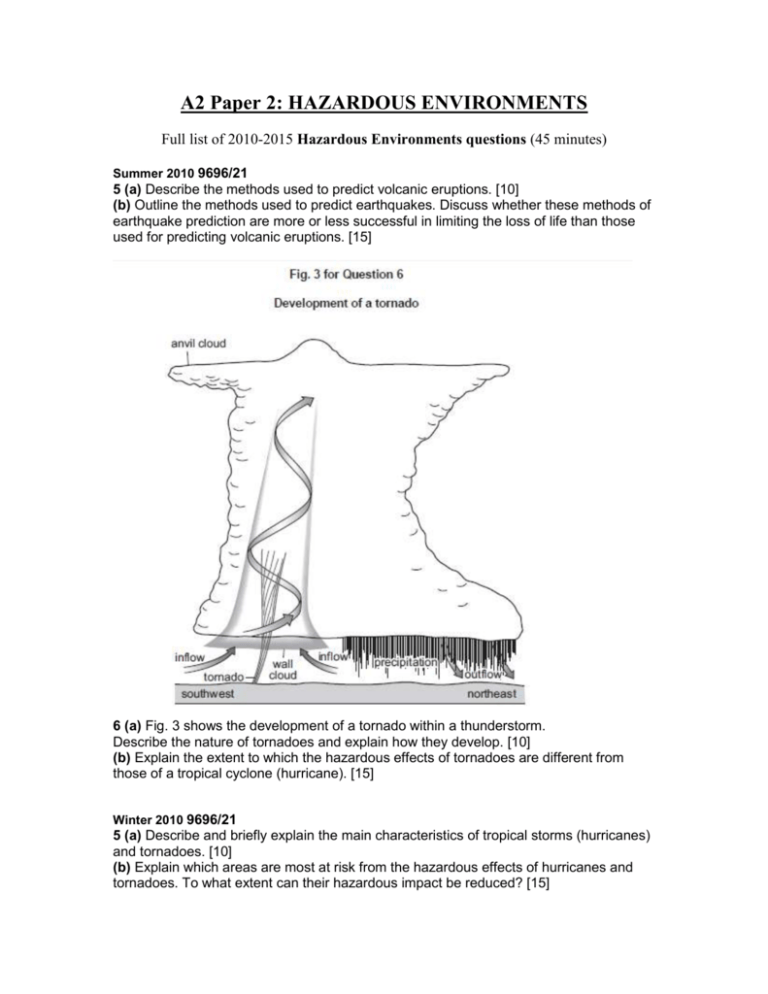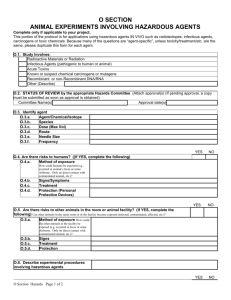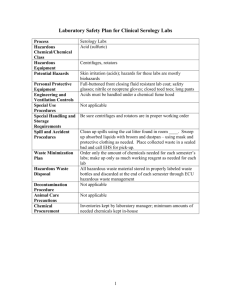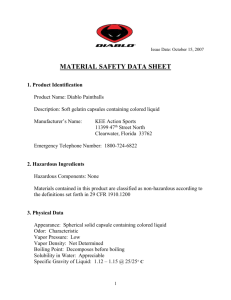A2 Paper 2 Hazardous Compilation
advertisement

A2 Paper 2: HAZARDOUS ENVIRONMENTS Full list of 2010-2015 Hazardous Environments questions (45 minutes) Summer 2010 9696/21 5 (a) Describe the methods used to predict volcanic eruptions. [10] (b) Outline the methods used to predict earthquakes. Discuss whether these methods of earthquake prediction are more or less successful in limiting the loss of life than those used for predicting volcanic eruptions. [15] 6 (a) Fig. 3 shows the development of a tornado within a thunderstorm. Describe the nature of tornadoes and explain how they develop. [10] (b) Explain the extent to which the hazardous effects of tornadoes are different from those of a tropical cyclone (hurricane). [15] Winter 2010 9696/21 5 (a) Describe and briefly explain the main characteristics of tropical storms (hurricanes) and tornadoes. [10] (b) Explain which areas are most at risk from the hazardous effects of hurricanes and tornadoes. To what extent can their hazardous impact be reduced? [15] Winter 2010 9696/21 6 (a) Fig. 3 shows the global distribution of earthquake epicentres. Describe and explain the distribution of earthquake epicentres shown in Fig. 3. [10] (b) Why are earthquakes hazardous? How and to what extent can their occurrence be predicted? [15] Summer 2011 9696/21 6 (a) Explain the causes and distribution of earthquakes. [10] (b) To what extent do physical factors and human factors influence the hazardous impact of earthquakes? [15] Winter 2011 9696/21 6 (a) Explain how hazardous mass movements occur. [10] (b) To what extent can such mass movement events be prevented from occurring and their hazardous effects limited? [15] Summer 2011 9696/21 5 Fig. 2 shows the distribution of areas affected by hurricane (tropical storm) activity. (a) Describe and explain the distribution of areas at risk of hurricanes. [10] (b) To what extent is it possible to manage the hazards posed by hurricanes? [15] Winter 2011 9696/21 5 (a) Fig. 2 shows the global distribution of volcanic hot spots. Explain the nature of volcanic hot spots and describe how their distribution differs from that of other types of volcano. [10] (b) To what extent and why are earthquakes more hazardous to human life than volcanoes? [15] Summer 2012 9696/21 5 (a) Explain how and where tornadoes may develop and describe the extent to which tornadoes are hazardous. [10] (b) Explain the nature and causes of two types of hazardous mass movements on slopes. How effective are measures which may be taken to reduce the hazardous impact of one of them? [15] Summer 2012 9696/21 6 (a) Fig. 2 shows the potential hazards from an eruption of a volcano. Describe the nature of three of the hazards shown and explain the extent to which each may prove to be hazardous. [10] (b) Describe the types of hazard that can result from a major earthquake event. Evaluate the effectiveness of measures to reduce the hazardous impact of earthquakes. [15] Winter 2012 9696/21 6 (a) Explain the causes of hazardous mass movements. [10] (b) Describe the measures that can be taken to limit the hazardous effects of mass movements and evaluate their effectiveness. [15] Winter 2012 9696/21 5 (a) Fig. 3 shows some methods used to predict and monitor earthquakes. Explain how these methods can be used, and with what success, for earthquake prediction. [10] (b) Explain how and where earthquakes occur. Describe their hazardous effects and the extent to which action can be taken to limit these effects. [15] Summer 2013 9696/21 5 (a) Explain why tectonic hazards associated with convergent plate margins are usually more devastating than those at other types of plate margin. [10] (b) To what extent is the prediction of volcanic eruptions more successful than the prediction of some other types of hazard? In what ways may the hazardous impact of volcanic eruptions be reduced? [15] Summer 2013 9696/21 6 (a) Fig. 2 shows the percentage of deaths from different impacts of tropical storms (cyclones) in Bangladesh. Fig. 3 shows the location of Bangladesh. Suggest reasons for the variations in the numbers of deaths from tropical storms occurring in Bangladesh [10] (b) Explain the nature and causes of hazardous mass movements on slopes and evaluate their effects on lives and property. [15] Winter 2013 9696/21 5 (a) Explain how tectonic plate boundaries that are close to densely populated areas can be hazardous. [10] (b) Fig. 2 shows some of the hazards associated with an eruption of the Nevado del Ruiz volcano in Colombia. Explain the nature of the hazards and assess the ways in which deaths from volcanic hazards might be prevented. [15] 6 (a) Explain the causes and most common locations of tropical cyclones (hurricanes) and tornadoes. [10] (b) Describe the hazards that are produced by tropical cyclones (hurricanes) and tornadoes. To what extent is it possible to manage these hazards? [15] Summer 2014 9696/21 6 (a) Describe one type of hazardous mass movement and explain how it is caused. Describe the nature of its hazardous effects. [10] (b) How are tornadoes formed? Explain the hazards that result from tornadoes and assess the extent to which their effects can be minimised. [15] Summer 2014 9696/21 5 (a) Table 1 shows a classification of tsunami in the Pacific Ocean. Explain how tsunami are caused and why their intensities and hazardous effects vary in the Pacific Ocean. [10] (b) Explain why some volcanoes are more hazardous than others. [15] Winter 2014 9696/21 6 (a) Explain the occurrence and characteristics of volcanoes associated with: (i) an oceanic plate converging with a continental plate, (ii) hot spots. [10] (b) Explain the factors that determine how hazardous an earthquake event might be. Evaluate measures that have been taken to reduce the hazardous impact of earthquakes. [15] Winter 2014 9696/21 5 (a) Fig. 3 shows the development of a landslide on a cliff or river bluff. Explain the factors and processes which cause such a landslide. What measures might be taken to limit the hazardous impact of such mass movements? [10] (b) Describe the hazards associated with tropical storms (hurricanes and cyclones) and evaluate their impact on the areas which they affect. Explain which measures have proved effective in reducing the hazardous impact of tropical storms. [15] Summer 2015 9696/21 5 (a) Explain how avalanches and landslides occur and describe their hazardous effects. [10] (b) To what extent can the hazardous effects of tropical storm surges be restricted and managed as compared to the hazardous effects of avalanches? [15] Summer 2015 9696/21 6 (a) Fig. 2 shows materials that are erupted from a volcano. Describe the nature of the erupted materials and explain how they might be hazardous. [10] (b) Explain the similarities and differences in the locations of hazardous earthquakes and volcanoes. To what extent are these hazards predictable? [15]







